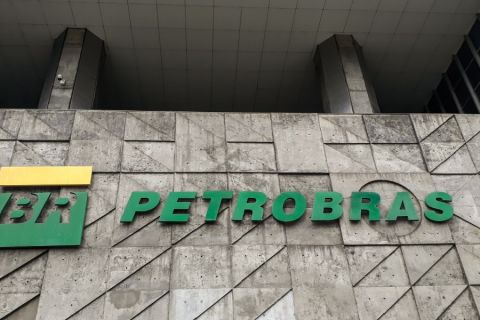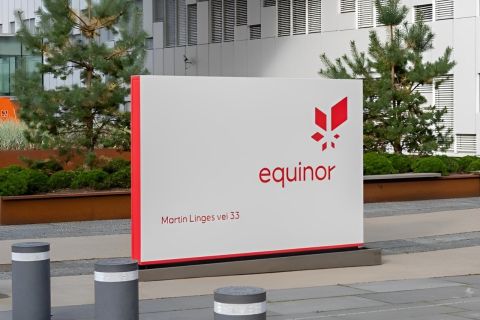Hundreds gathered in Atlanta’s Centennial Olympic Park last April to kick off the 100-year celebration of one of the oldest forms of alternative energy: propane. At the Clean Air Rally and Autogas Parade, 49 propane-fueled vehicles cruised through the streets showcasing the performance and reliability of the natural gas liquid as a vehicle fuel.
Propane—also known as LP gas, autogas and LPG— was commercially used for the first time in May 1912. Less than a year later it was fueling vehicles. Since then, according to the U.S. Department of Energy (DOE), 17 million LP gas vehicles have flooded the roads worldwide making it the world’s most widely used alternative-vehicle fuel.
However, according to DOE estimates, only 2% of those vehicles are located in the U.S. In a market that has become engulfed in talk of compressed natural gas (CNG) and liquefied natural gas (LNG)-fueled vehicles, many in the propane industry are fighting an uphill battle to keep this century-old, but environmentally friendly, fuel relevant.
“How do we take this fuel that’s proven itself time and time again—a fuel that is perfect for our country now, due to excess supply—how do we turn the alternative energy tide with that fuel?” CleanFUEL USA Founder and Chief Executive, Curtis Donaldson, tells Midstream Business. “That’s what I find myself asking every day.”
Educating the public—including lawmakers and automobile industry leaders—of the benefits and effectiveness of LP gas is essential, Donaldson says. There are three main benefits that consumers should be aware of when considering LP gas, he says. Propane has become an abundant domestic fuel—about 70% of propane comes from natural gas processing and, according to Donaldson, propane’s increasing domestic production should be at the forefront of their minds.
“After 9/11, people started caring where energy came from, and the first big checkmark for propane is that it is domestically produced,” Donaldson says. “With an evergrowing supply, we have enough propane to last for generations. If we are going to build the market up to use something different than gasoline, let’s make sure that it is from here.”
With the increasing push to go green and a market aiming for cleaner-burning fuels, propane passes that test with flying colors.
“It’s cleaner burning in all aspects—NOx, CO2—the air-quality improvement adds a checkmark,” he says. According to the National Propane Gas Association, propane is an approved, alternative clean fuel that is listed in both the 1990 Clean Air Act and the National Energy Policy Act of 1992.
And it’s affordable. Today, propane is priced just under $2 per gallon on a gasoline-gallon equivalent basis. Eventually, says Donaldson, LP gas will make sense economically for the consumer market. For now, though, the fuel is ideally suited for fleet operations.
Fleet operators’ choice
For years, LP gas has been the roadtransport fuel of choice for many of America’s fleet operators. But some people mistakenly consider the weight and size of a propane autogas tank as a possible hindrance to the fuel moving from on-road fleets to the showroom floor.
In actuality, CNG or LNG-fueled vehicles require tanks that, at times, can take up more room than gasoline and diesel tanks. In comparison, propane autogas tanks are four times smaller than CNG tanks, according to CleanFUEL USA.
Propane-conversion tanks are also generally smaller than CNG tanks, according to the Environmental Protection Agency (EPA), adding only a slight increase in weight compared to that of a gasoline-powered vehicle. And, according to the DOE, with a 340-mile driving range, propane-fueled vehicles are comparable to their gasoline-fueled counterparts.
According to the EPA’s propane fact sheet, converting to LP gas includes adding a special fuel tank to the vehicle’s trunk, which takes up the same space as a spare tire and only adds 100 pounds to the vehicle’s weight.
However, according to the EPA, propane vehicles are more expensive than gasoline-fueled vehicles, costing $3,000 to $4,000 more for light-duty vehicles and $4,000 to $5,000 more for medium-duty trucks. Both the EPA and Donaldson expect the cost to decrease as more propane vehicles are manufactured, sold and put into use by fleets.
In theory, building the American fleet market would drive down the costs for consumer propane-fueled vehicles by bringing about more fueling stations, more infrastructure availability and increasing the volume of production, says Donaldson.
Infrastructure advantage
Propane has a strong advantage among alternative fuels when it comes to infrastructure. There are already more than 2,500 LP gas refueling stations around the country, according to the Energy Information Administration.
An LP gas station costs considerably less to build than a CNG station, which requires more space and more sophisticated technology to compress the natural gas so it can be used in a vehicle. A high-end version of an LP gas station will top out about $40,000, while it can cost $500,000 to build a low-end CNG station, Donaldson says. In addition, many propane suppliers will build a station for a client in return for a multiyear contract.
Yet despite these benefits, propane still faces a world of challenges—including the swirling myths and rumors about the cost of infrastructure.
“The argument about infrastructure cost doesn’t make sense when you peel the onion back a little further,” Donaldson says. “The infrastructure for propane is mature; numerous terminals are already in place. Our country has to do nothing tomorrow morning to get propane around this country because, guess what, it already exists.”
No doubt, natural gas and its CNG fuel present propane with formidable competition. But propane and CNG are linked because both are taking on gasoline and diesel as they work to expand into the fleet market. Staying vigilant and focused on that task is the key to keeping propane relevant in the competitive world of alternative fuels, says Tucker Perkins, chief business development officer with the Propane Education & Research Council.
“Every day we have some kind of small win that tells us we’re moving in the right direction,” he says. “Today the National Park Service came to us and said, ‘We’re very interested in converting our fleet to operate on propane autogas, including what we do with our commercial mowing operations.’”
For Perkins, that kind of opportunity, along with customers ranging from Sears to police fleets to thousands of small businesses, will help turn the tide for LP gas. “When enough people see that, it begins to be a follow-the-herd mentality. But the truth is, it becomes such a competitive advantage for people who are using it, that those people who stay committed to gasoline or diesel fuel all of the sudden might find themselves at a competitive disadvantage.”
And propane’s advantage, Perkins says, is significant. About 140,000 vehicles operating in the U.S. today run on propane, and the fleets that have made the switch to propane reaped the rewards of this cleaner burning, domestically produced fuel.
“The Dallas school system said recently in a press interview that they had saved $1.5 million last year using propane-fueled school buses,” he says. “We see that in the literature every day where municipalities have converted their police fleet or their school bus system and begin to talk about the savings with propane autogas.”
And both Donaldson and Perkins see continued growth for propane.
In the fleet market, Perkins says that the number of customers in December 2012 was significantly higher than one year ago, although he was unable to give an exact number, and, he says, “our forecast for next year could easily double again.”
Donaldson, on the other hand, sees the growth of propane as an alternative fuel as “slow but steady.” Propane, he says, has taken a back seat to CNG and the battle for public opinion and perception has been and will continue to be fiercely fought.
“CNG is winning some of the battles with recent public relations campaigns but propane is winning battles where it really counts,” he tells Midstream Business. “There are more fleets converting to propane than CNG but less about propane is reported in the mainstream media. I think it is a battle of getting more OEM [original equipment manufacturers] products to market and convincing more fleets to convert so eventually the tide turns; then the dynamics of what’s happening in the marketplace and the perception of what’s happening become one in the same. That is how you win the battle.”
Recommended Reading
Chouest Acquires ROV Company ROVOP to Expand Subsea Capabilities
2024-05-02 - With the acquisition of ROVOP, Chouest will have a fleet of more than 100 ROVs.
SilverBow Makes Horseshoe Lateral in Austin Chalk
2024-05-01 - SilverBow Resources’ 8,900-foot lateral was drilled in Live Oak County at the intersection of South Texas’ oil and condensate phases. It's a first in the Chalk.
Petrobras Sending Nearly Half of Oil Exports to China
2024-04-30 - Conflict in the Middle East has enabled Brazil’s state-owned Petrobras to change the flow of its oil exports, with China being the primary beneficiary, followed by Europe.
Equinor Says EQT Asset Swap Upgrades International Portfolio
2024-04-30 - Equinor CFO Torgrim Reitan says the company’s recent U.S. asset swap with EQT Corp. was an example of the European company “high-grading” its international E&P portfolio.
US Drillers Add Oil, Gas Rigs for Third Time in Four Weeks
2024-02-09 - Despite this week's rig increase, Baker Hughes said the total count was still down 138 rigs, or 18%, below this time last year.




